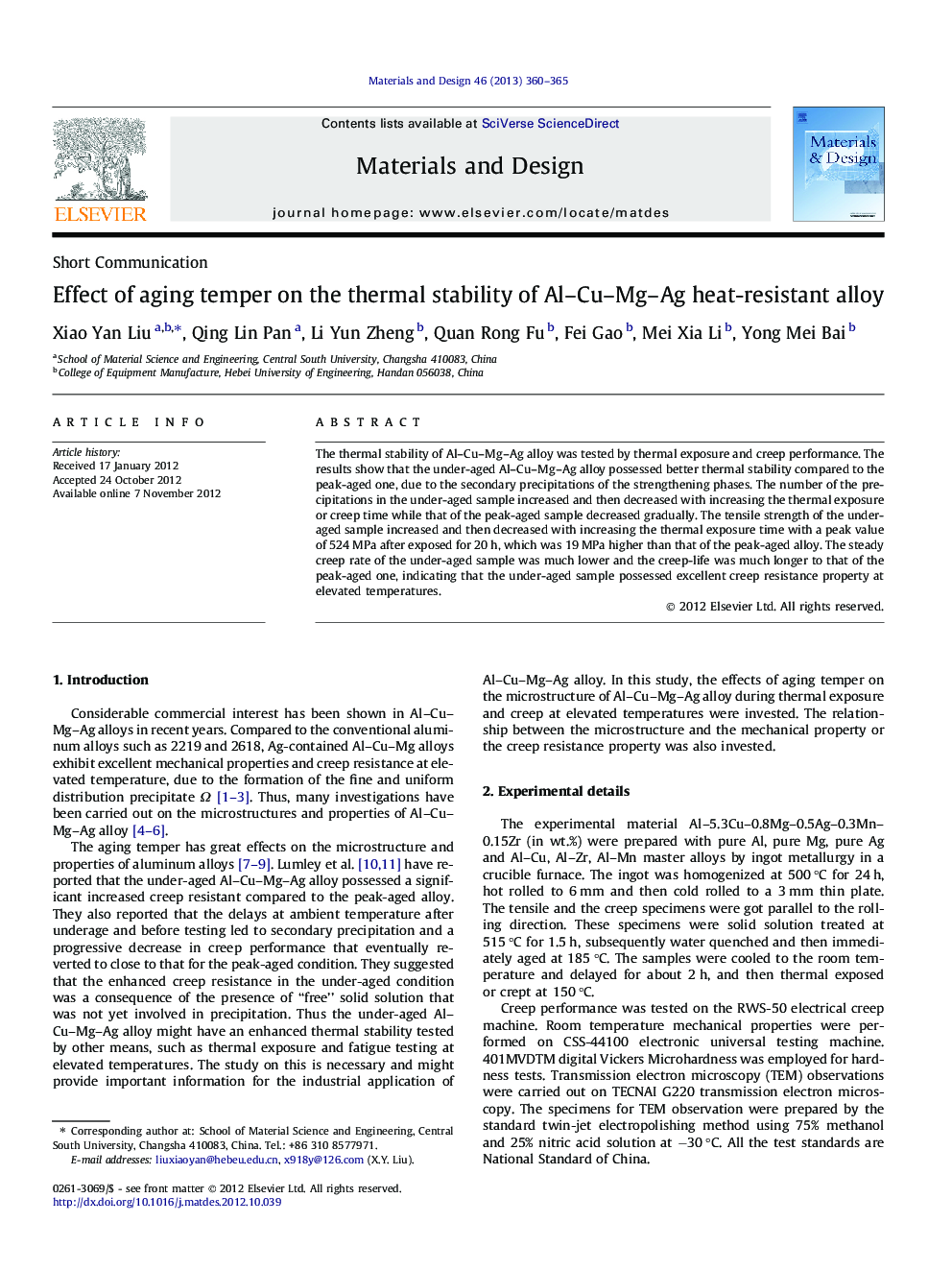| Article ID | Journal | Published Year | Pages | File Type |
|---|---|---|---|---|
| 830157 | Materials & Design (1980-2015) | 2013 | 6 Pages |
The thermal stability of Al–Cu–Mg–Ag alloy was tested by thermal exposure and creep performance. The results show that the under-aged Al–Cu–Mg–Ag alloy possessed better thermal stability compared to the peak-aged one, due to the secondary precipitations of the strengthening phases. The number of the precipitations in the under-aged sample increased and then decreased with increasing the thermal exposure or creep time while that of the peak-aged sample decreased gradually. The tensile strength of the under-aged sample increased and then decreased with increasing the thermal exposure time with a peak value of 524 MPa after exposed for 20 h, which was 19 MPa higher than that of the peak-aged alloy. The steady creep rate of the under-aged sample was much lower and the creep-life was much longer to that of the peak-aged one, indicating that the under-aged sample possessed excellent creep resistance property at elevated temperatures.
► The under-aged alloy has higher tensile strength after thermal exposed. ► The creep resistance of the under-aged alloy was higher than that of the peak-aged one. ► The under-aged alloy has better thermal stability compared with the peak-aged one.
